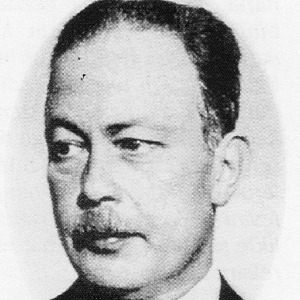
Writer (b, 1894, İstanbul - d. 20 March 1971, İstanbul). He also used the pen name Tabişgâhi Lâhuti. He attended the Rehber-i Tahsil High School, Mercan High School and graduated from İstanbul University, Faculty of Literature. He served as a secretary to the Grand Vizier and at the Ministry of the Interior and as the private secretary of Talat Paşa and Cemal Paşa in Syria and Palestine during World War I. During the years of the armistice, he founded the newspaper Akşam (1918) in which he published his articles that were critical of the opposition of the Independence War. He was sentenced to death because of such articles. He was acquitted after the Battle of İnönü. In 1922, he was elected as a parliamentary deputy to the Turkish Grand National Assembly from Bolu. Besides his duty as a deputy that lasted until 1950, he wrote editorial articles, interviews and memoirs in the newspaper Hâkimiyet-î Milliye, which was the journal of official ideology, and in Milliyet, Ulus and Dünya, which he founded in collaboration with Bediî Faik.
His first essays appeared in Servet-i Fünûn, and his first poems in
the review Tecelli ve Kadın. His
profession as a journalist began with articles published in the review Tanin in
He was an advocate
of westernization and the Kemalist Revolution until the end of his life;
however, he opposed the idea of a pure Turkish language, which he had
originally supported in his youth.
WORKS:
MEMOIR: Ateş ve Güneş (Fire and Sun, 1918), Zeytindağı (Zeytindağı, 1931; published
with Ateş ve Güneş-Fire and Sun,
1938), Atatürk’ün Bana Anlattıkları
(What Atatürk Told Me, 1955), Mustafa
Kemal’in Mütareke Defteri (Mustafa Kemal’s Notebook on the Armistice,
1955), Çankaya (Çankaya, 2 volumes,
1961; one volume, 1969), Batış Yılları
(Years of Downfall, 1963), Atatürk’ün
Hatıraları / 1914-1919 (Memories of Atatürk/1914-1919, 1965), Atatürk Ne İdi? (What was Atatürk?,
1968).
STUDY: Başveren İnkılapçı (The Revolutionist
Who Gave His Life, about Ali Suavi, 1954), Babamız
Atatürk (Atatürk, Our Father, 1955), Atatürkçülük
Nedir (What is Kemalism, 1963).
TRAVEL LITERATURE: Faşist Roma - Kemalist Tiran / Kaybolmuş Makedonya (Fascist Rome-Kemalist
Tirana/Lost Macedonia, 1930), Deniz Aşırı
(Overseas, 1931), Yeni Rusya (New
Russia, 1931), Moskova-Roma
(Moscow-Rome, 1932), Bizim Akdeniz
(Our Mediterranean, 1934), Taymis
Kıyıları (Coasts of Taymis, 1934),
Tuna Kıyıları (Banks of the River Danube, 1938), Hind (India, 1944), Yolcu
Defteri (Notebook of a Traveler, 1966), Gezerek
Gördüklerim (What I Saw While Traveling, 1970).
NOVEL: Roman (Novel, 1932).
ANECDOTE-INTERVIEW: Eski Saat (The Old Clock, 1933), Niçin Kurtulmak (Why Escape?, 1953), Çile (Suffering, 1955), İnanç (Faith, 1964), Kurtuluş (Liberation, 1966), Pazar Konuşmaları (Sunday Conversations, 1966), Bayrak (The Flag, 1970).